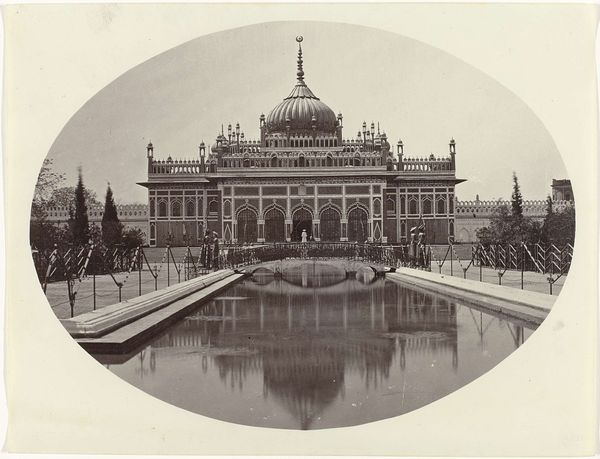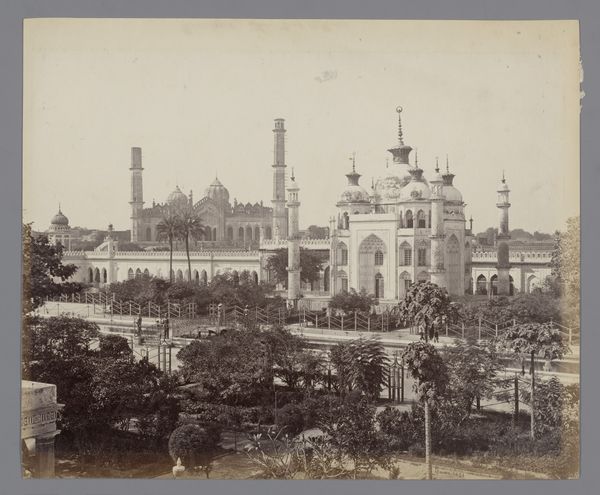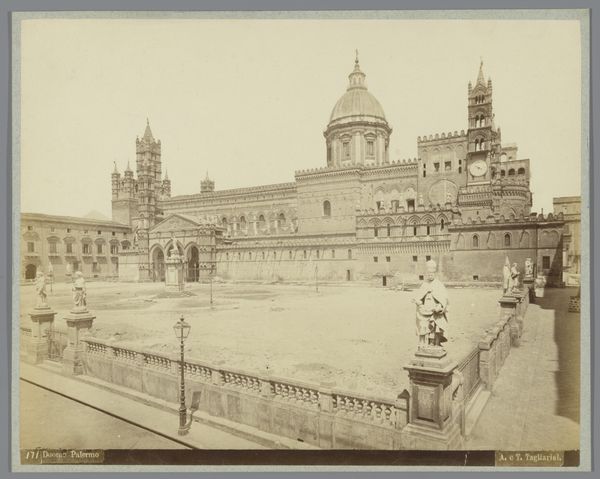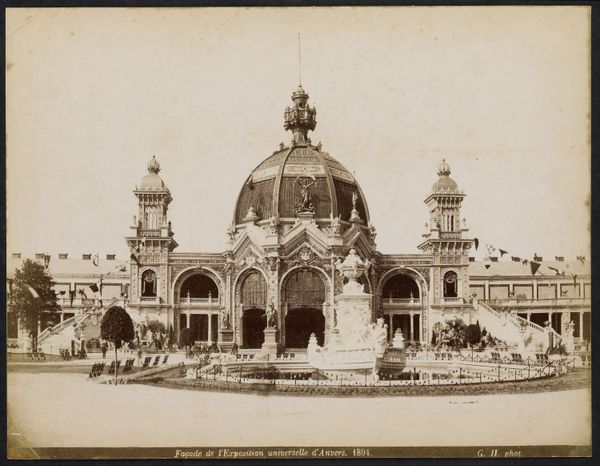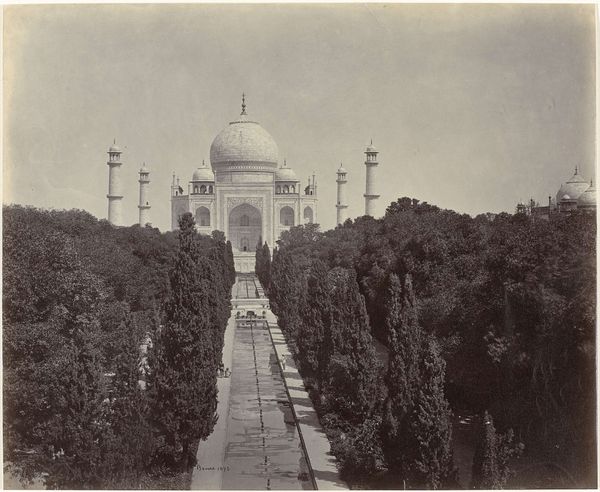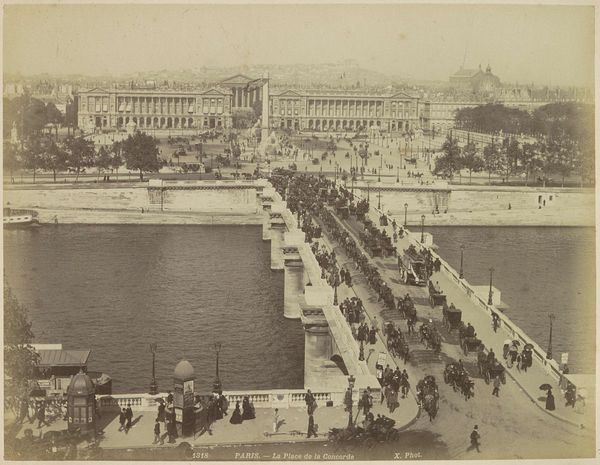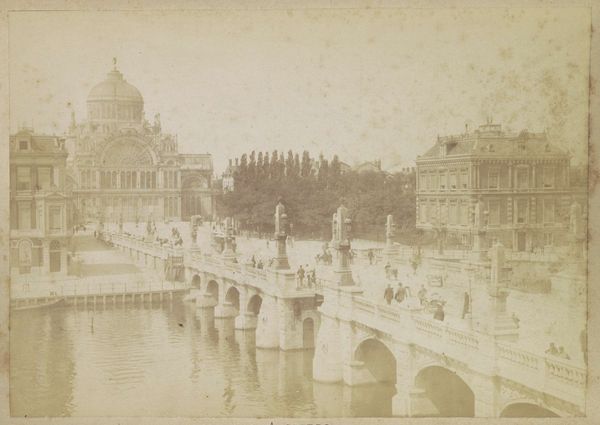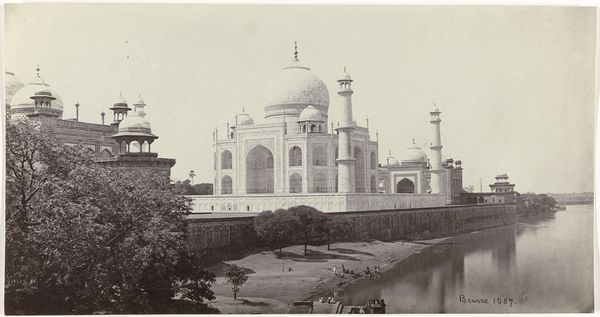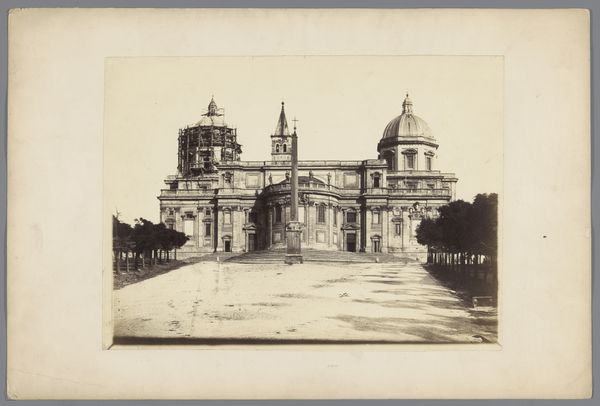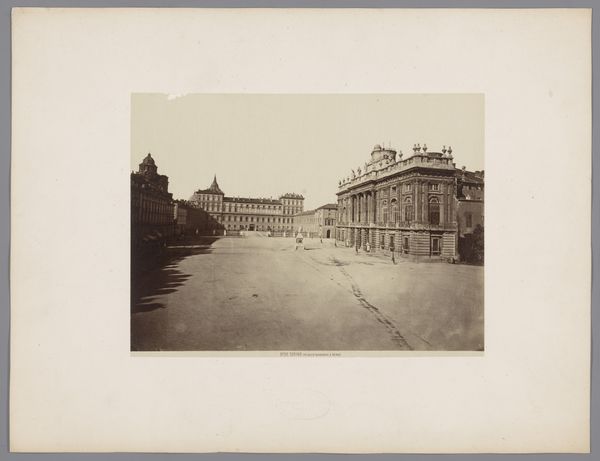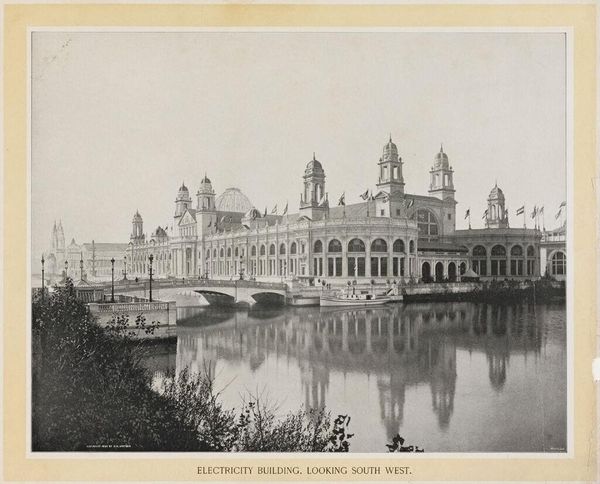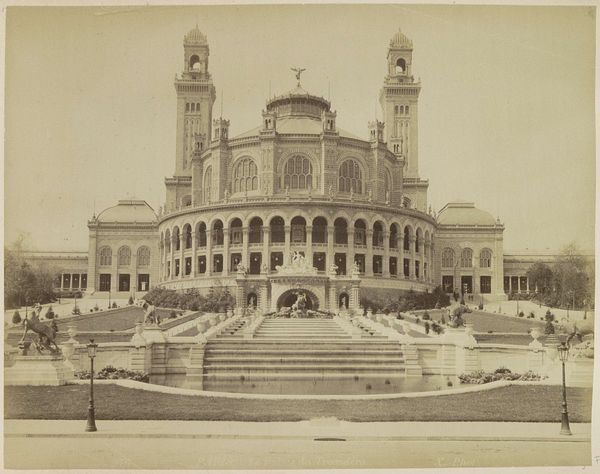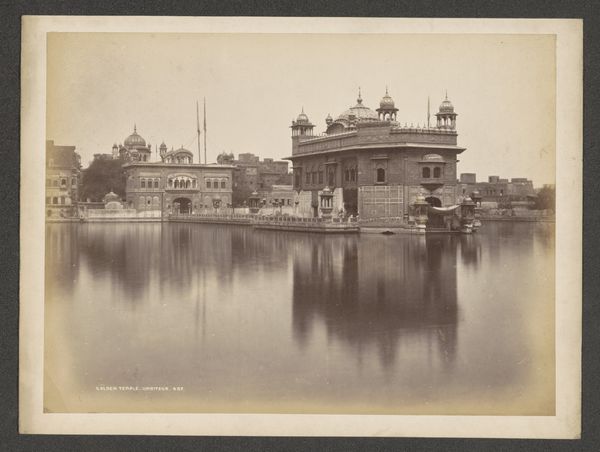
albumen-print, photography, albumen-print, architecture
#
albumen-print
#
cityscape photography
#
cityscape
#
historic architecture
#
traditional architecture
#
photography
#
orientalism
#
cityscape
#
islamic-art
#
albumen-print
#
architecture
Dimensions: 9 5/16 x 11 7/16 in. (23.65 x 29.05 cm) (image, sheet)14 7/16 x 17 1/16 in. (36.67 x 43.32 cm) (mount)
Copyright: Public Domain
Curator: The photograph before us, taken around 1865 by Samuel Bourne, showcases the Great Imambara in Lucknow, India. The work is an albumen print, a process known for its sharp detail and tonal range. Editor: The first thing that strikes me is the rigid symmetry, softened by the flowing water and foliage. You can almost feel the heaviness of the stone architecture juxtaposed with the organic growth of the gardens. Curator: Indeed. Bourne’s photographs, popular in Victorian England, served as powerful documents shaping Western perceptions of India. Consider how the Imambara, a Shia Muslim shrine complex, is presented through a colonial lens. Bourne was very interested in documenting the architecture of the Indian subcontinent. Editor: And albumen prints were the dominant technology then, right? Mass production of such images shaped consumption and a view of an exotic East, marketed towards European society. I am sure the manual labor and raw materials that shaped such art works would not be on their mind when admiring its photographic sharpness. Curator: Exactly, this piece becomes part of a larger discussion about Orientalism and the exoticized gaze in photography, where specific imagery, repeated and circulated, created expectations for a culture and shaped diplomatic relations. This imagery also upheld an idea of hierarchy. Editor: Thinking about the photographic processes brings questions on local labour as well. Who were the Indian workers and craftspeople involved in its making? This helps deconstruct the grand aesthetic. Curator: Absolutely, acknowledging those hands in the art changes our view of colonial photography from objective record to constructed interpretation. Bourne's commercial success depended heavily on those workers. Editor: A vital layer that shifts our understanding of not just what we are seeing, but also the power dynamics inherent in its making and distribution. Curator: Precisely, and looking through the layers reveals so much about that specific moment in the relationship between the Victorian world and the Indian Subcontinent. Editor: Bourne's photograph serves both as documentation of architecture, labor and culture while also pointing to the history of production behind it. Thank you for that analysis.
Comments
No comments
Be the first to comment and join the conversation on the ultimate creative platform.
